PRODUCT INFO
GALAX GeForce RTX 3070 SG
29th, October, 2020
Keeping their tradition alive of launching a new graphics architecture every two years, this year, NVIDIA introduces its Ampere GPU. The Ampere GPU is built upon the foundation set by Turing. Termed as its biggest generational leap, the NVIDIA Ampere GPUs excel compared to previous generations at everything. This time with the GeForce RTX 3070 8 GB graphics card based on the Ampere GA104 GPU architecture
The Ampere GPU architecture has a lot to be talked about in this review, but so does the new RTX lineup. The Ampere lineup offers faster shader performance, faster ray tracing performance, and faster AI performance. Built on a brand new process node and featuring an architecture designed from the ground up, Ampere is a killer product with lots of numbers to talk about.
The fundamental of Ampere was to take everything NVIDIA learned with its Turing architecture and not only refine it but to use its DNA to form a product in a completely new performance category. Tall claims were made by NVIDIA when they introduced its Ampere lineup earlier this month & we will be finding out whether NVIDIA hit all the ticks with its Ampere architecture as this review will be your guiding path to see what makes Ampere and how it performs against its predecessors.
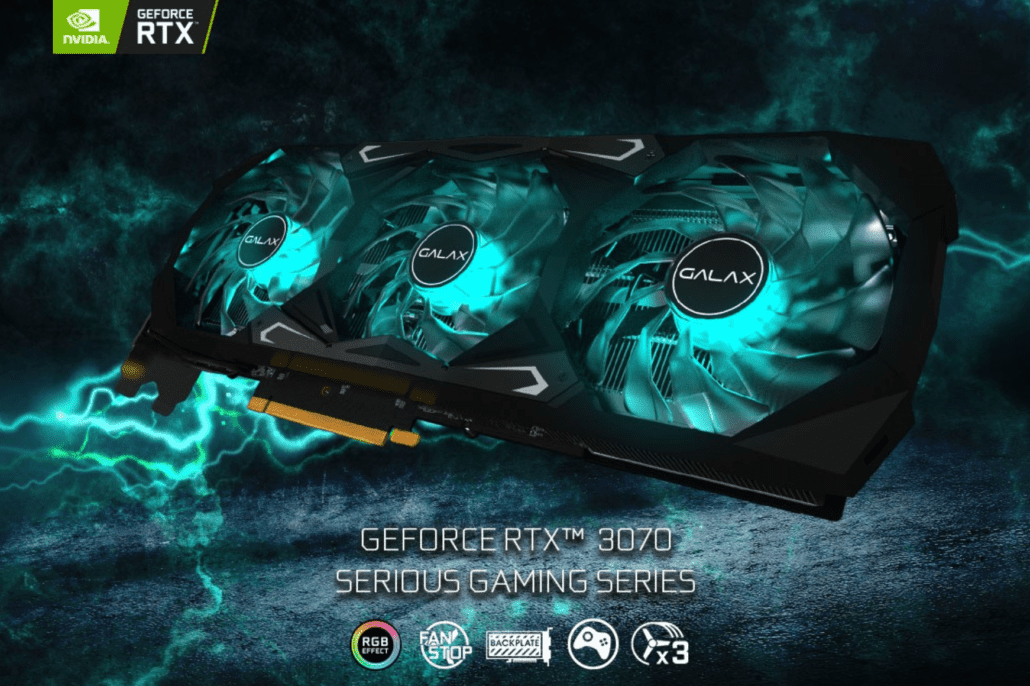
NVIDIA GeForce RTX 30 Series Gaming Graphics Cards – The Biggest GPU Performance Leap in Recent History
Turing wasn’t just any graphics core, it was the graphics core that was to become the foundation of future GPUs. The future is realized now with next-generation consoles going deep in talks about ray tracing and AI-assisted super-sampling techniques. NVIDIA had a head start with Turing and its Ampere generation will only do things infinitely times better.
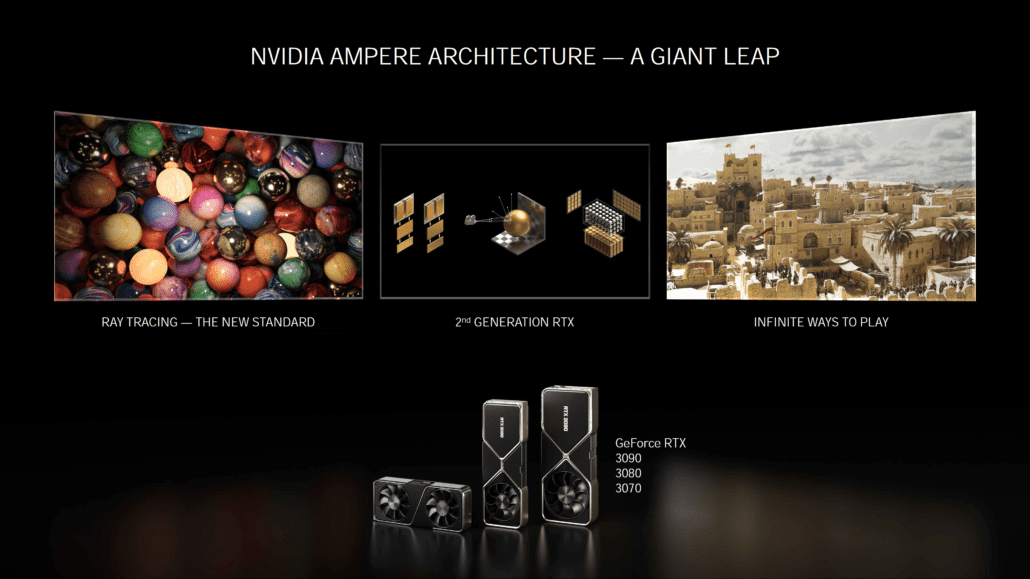
The Ampere GPU does many traditional things which we would expect from a GPU, but at the same time, also breaks the barrier when it comes to untraditional GPU operations. Just to sum up some features:
- New Streaming Multiprocessor (SM)
- New Turing Tensor Cores
- New Real-Time Ray Tracing Acceleration
- New Shading Enhancements
- New Deep Learning Features For Graphics & Inference
- New GDDR6X High-Performance Memory Subsystem
- New 2nd Generation NVLINK Interconnect
- New HDMI 2.1 Display Engine & Next-Gen NVENC/NVDEC
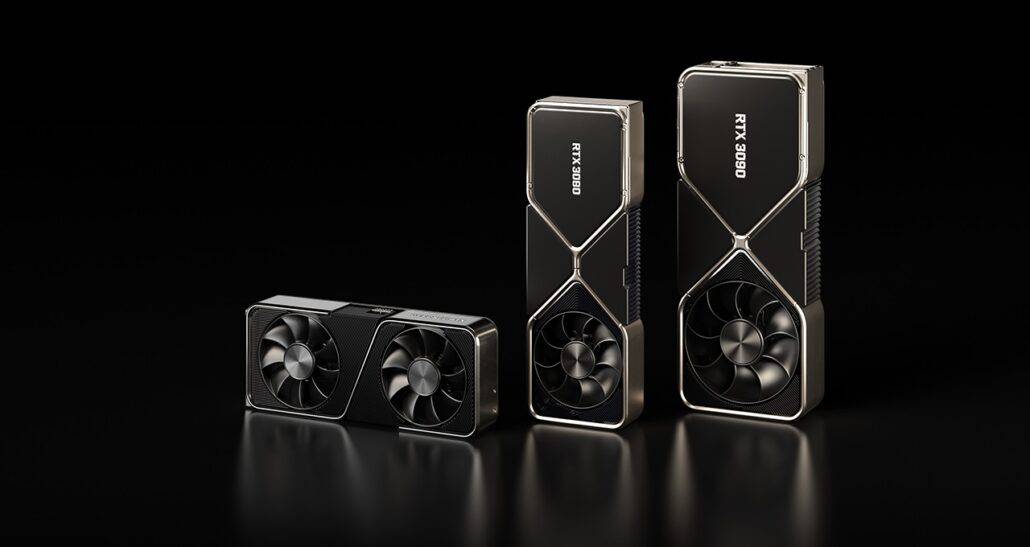
The technologies mentioned above are some of the main building blocks of the Ampere GPU, but there’s more within the graphics core itself which we will talk about in detail so let’s get started.
NVIDIA GeForce RTX 30 Series Pricing Per Segment
NVIDIA’s GeForce RTX 30 series is made up of a diverse portfolio of graphics cards. Currently, you will only be limited to the higher-end configurations starting at $499 US for the GeForce RTX 3070, $699 US for the GeForce RTX 3080, and $1499 US for the GeForce RTX 3090. NVIDIA themselves call the GeForce RTX 3080 as the flagship graphics card and not the GeForce RTX 3090.
The RTX 3080 & RTX 3070 are both priced well and in-line with their predecessors but the GeForce RTX 3090 goes all out with a price of $1499 US. NVIDIA calls the GeForce RTX 3090 as the “BFGPU” and as per the terminology, it seems like this is a new marketing name for the Titan graphics card. It is likely that we could see a Titan based card under the Quadro branding with faster specs out of the box but the GeForce RTX 3090 is purely a gaming graphics card first with all the horsepower for intense professional and workstation workloads.
With that said, the GeForce RTX 3080 replaces the RTX 2080 SUPER at the same price point and the GeForce RTX 3070 replaces the GeForce RTX 2070 SUPER at the same price point. Given this trend, we might see the more mainstream variants cost just as much as their RTX 20 SUPER series cards but with a higher performance out of the box.
NVIDIA GeForce GPU Segment/Tier Prices
| Graphics Segment | 2014-2016 | 2016-2017 | 2017-2018 | 2018-2019 | 2019-2020 | 2020-2021 |
|---|---|---|---|---|---|---|
| Titan Tier | Titan X (Maxwell) | Titan X (Pascal) | Titan Xp (Pascal) | Titan V (Volta) | Titan RTX (Turing) | TBA |
| Price | $999 US | $1199 US | $1199 US | $2999 US | $2499 US | TBA |
| Ultra Enthusiast Tier | GeForce GTX 980 Ti | GeForce GTX 980 Ti | GeForce GTX 1080 Ti | GeForce RTX 2080 Ti | GeForce RTX 2080 Ti | GeForce RTX 3090 |
| Price | $649 US | $649 US | $699 US | $999 US | $999 US | $1499 US |
| Enthusiast Tier | GeForce GTX 980 | GeForce GTX 1080 | GeForce GTX 1080 | GeForce RTX 2080 | GeForce RTX 2080 SUPER | GeForce RTX 3080 |
| Price | $549 US | $549 US | $549 US | $699 US | $699 US | $699 US |
| High-End Tier | GeForce GTX 970 | GeForce GTX 1070 | GeForce GTX 1070 | GeForce RTX 2070 | GeForce RTX 2070 SUPER | GeForce RTX 3070 |
| Price | $329 US | $379 US | $379 US | $499 US | $499 US | $499 |
| Mainstream Tier | GeForce GTX 960 | GeForce GTX 1060 | GeForce GTX 1060 | GeForce GTX 1060 | GeForce RTX 2060 SUPER GeForce RTX 2060 GeForce GTX 1660 Ti GeForce GTX 1660 SUPER GeForce GTX 1660 |
GeForce RTX 3060 Ti |
| Price | $199 US | $249 US | $249 US | $249 US | $399 US $349 US $279 US $229 US $219 US |
$399 US |
| Entry Tier | GTX 750 Ti GTX 750 |
GTX 950 | GTX 1050 Ti GTX 1050 |
GTX 1050 Ti GTX 1050 |
GTX 1650 SUPER GTX 1650 |
TBA |
| Price | $149 US $119 US |
$149 US | $139 US $109 US |
$139 US $109 US |
$159 US $149 US |
TBA |
In addition to the specs/price update, NVIDIA’s RTX technologies are being widely adopted major game engines and APIs such as Microsft DirectX (DXR), Vulkan, Unreal Engine, Unity, and Frostbite. While there were only three RTX titles around the launch of the RTX 20 series cards, NVIDIA now has at least 28 titles that utilize their RTX feature set to offer real-time ray tracing with more coming soon.
In addition to that, with the upcoming consoles confirmed to feature ray tracing, developers can also make use of the RTX technology to fine-tune future games for the GeForce RTX hardware. Currently, NVIDIA has 13 game engines that are leveraging their RTX technologies for use in their upcoming and existing games while both Vulkan and DirectX 12 Ultimate APIs are part of the RTX ecosystem on the PC platform.
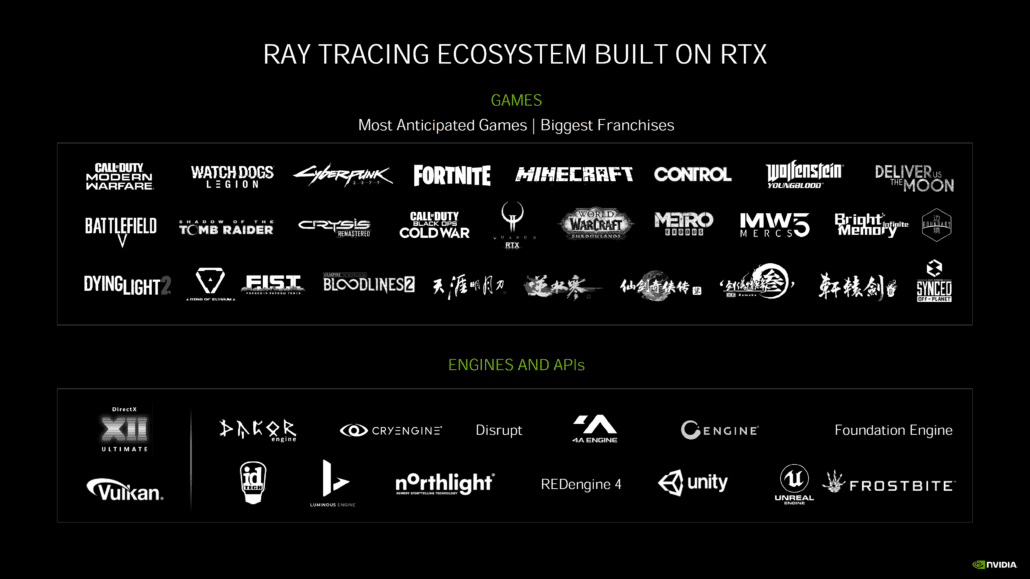
So for this review, I will be taking a look at the GALAX GeForce RTX 3070 SG (Serious Gaming). The Serious Gaming is expected to be priced close to the Founders Edition variant at around $499 US. The card will come with a triple-fan design and an additional fourth fan along with a factory boost out of the box. So let’s find out if the claims of RTX 3070 being faster than the RTX 2080 Ti are true at all and how it fares against an AIB RTX 2080 Ti graphics card.
The NVIDIA GeForce RTX 3070 Graphics Card
The NVIDIA GeForce RTX 3070 is a force to be reckoned with. It takes the throne of the fastest PC gaming graphics card with nothing coming even close to it. It’s surprisingly much faster than the GeForce RTX 2080 Ti which is its Turing based predecessor.
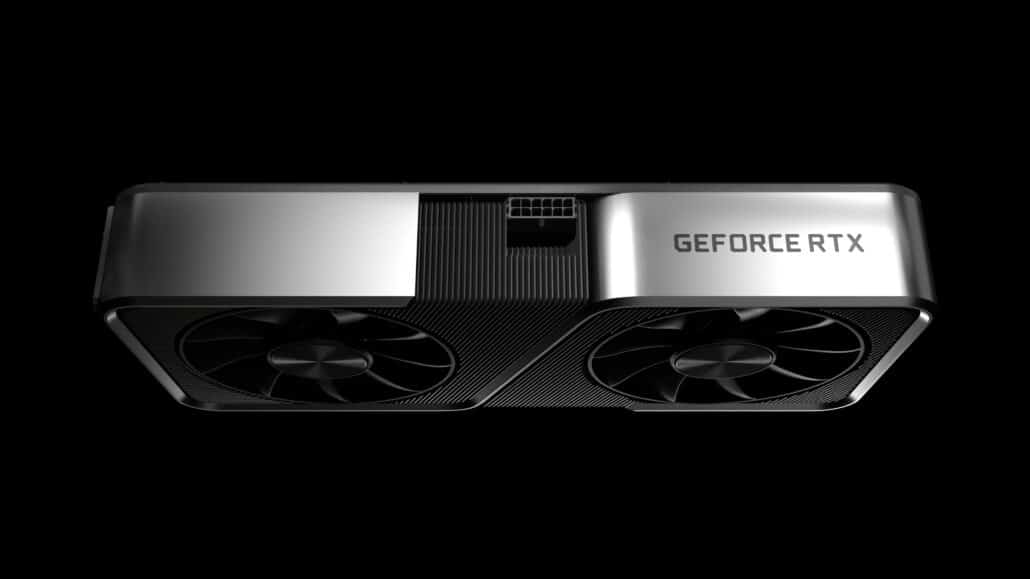
NVIDIA designed the GeForce RTX 3070 is designed to be the gaming champ, powering the next generation of AAA gaming titles with superb visuals and insane fluidity. It’s not just the FPS that matters these days, its visuals, and a smoother frame rate too and this is exactly what the GeForce RTX 30 series is made to excel at. There’s a lot to talk about regarding NVIDIA’s flagship Ampere gaming graphics cards so let’s start off with the specifications.
Marvels of NVIDIA Ampere Architecture – 2nd Generation RTX
Enabling the blistering performance of the new RTX 30 Series GPUs and the NVIDIA Ampere architecture are cutting-edge technologies and over two decades of graphics R&D, including:
- New streaming multiprocessors: The building block for the world’s fastest, most efficient GPU, delivering 2x the FP32 throughput of the previous generation, and 30 Shader-TFLOPS of processing power.
- Second-gen RT Cores: New dedicated RT Cores deliver 2x the throughput of the previous generation, plus concurrent ray tracing and shading and compute, with 58 RT-TFLOPS of processing power.
- Third-gen Tensor Cores: New dedicated Tensor Cores, with up to 2x the throughput of the previous generation, making it faster and more efficient to run AI-powered technologies, like NVIDIA DLSS, and 238 Tensor-TFLOPS of processing power.
- NVIDIA RTX IO: Enables rapid GPU-based loading and game asset decompression, accelerating input/output performance by up to 100x compared with hard drives and traditional storage APIs. In conjunction with Microsoft’s new DirectStorage for Windows API, RTX IO offloads dozens of CPU cores’ worth of work to the RTX GPU, improving frame rates and enabling near-instantaneous game loading.
- World’s fastest graphics memory: NVIDIA has worked with Micron to create the world’s fastest discrete graphics memory for the RTX 30 Series, GDDR6X. It provides data speeds of close to 1TB/s system memory bandwidth for graphics card applications, maximizing game and app performance.
- Next-gen process technology: New 8N NVIDIA custom process from Samsung, which allows for higher transistor density and more efficiency.
NVIDIA GeForce RTX 3070 Graphics Card Specifications – GA104 GPU & 8 GB GDDR6 Memory
At the heart of the NVIDIA GeForce RTX 3070 graphics card lies the GA104 GPU. The GA104 is one of the many Ampere GPUs that we will be getting on the gaming segment. The GA104 GPU is the second-fastest Ampere chip in the stack. The GPU is based on Samsung’s 8nm (N8) process node. The GPU measures at 392.5mm2 and features 17.4 Billion transistors which are almost 93% of the transistors featured on the TU102 GPU. At the same time, the GA104 GPU is almost half the size of the TU102 GPU which is an insane amount of density.
For the GeForce RTX 3070, NVIDIA has enabled a total of 46 SM units on its flagship which results in a total of 5888 CUDA cores. In addition to the CUDA cores, NVIDIA’s GeForce RTX 3070 also comes packed with next-generation RT (Ray-Tracing) cores, Tensor cores, and brand new SM or streaming multi-processor units.
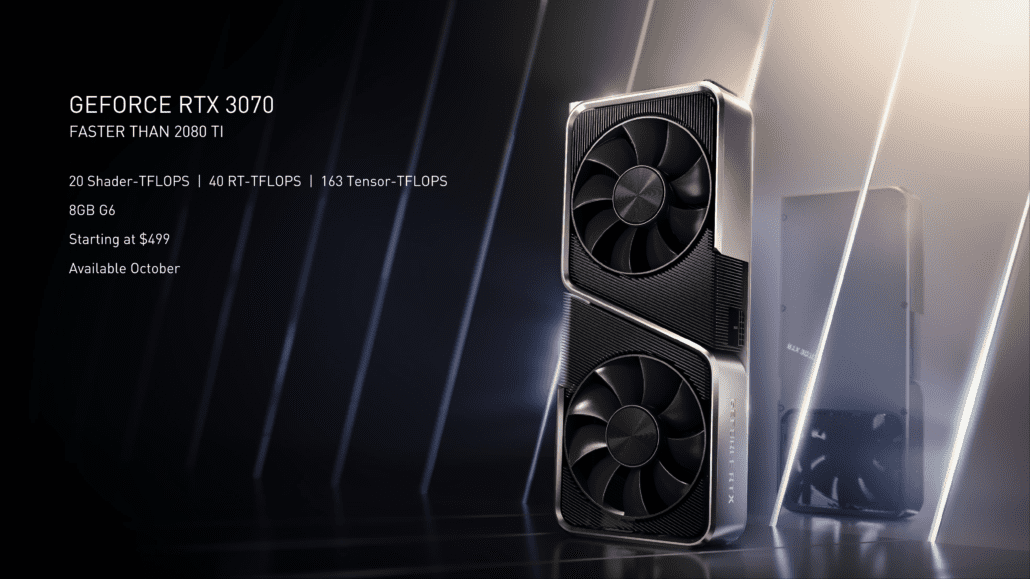
In terms of memory, the GeForce RTX 3070 features 8 GB of GDDR6 memory. The GeForce RTX 3070 comes with memory at speeds of 14 Gbps. That along with a full uncut bus interface of 256-bit will deliver a cumulative bandwidth of 448 Gbps. The NVIDIA GeForce RTX 3070 has a TGP of 220W.
NVIDIA GeForce RTX 30 Series ‘Ampere’ Graphics Card Specifications:
| Graphics Card Name | NVIDIA GeForce RTX 3060 Ti | NVIDIA GeForce RTX 3070 | NVIDIA GeForce RTX 3080 | NVIDIA GeForce RTX 3090 |
|---|---|---|---|---|
| GPU Name | Ampere GA104-200 | Ampere GA104-300 | Ampere GA102-200 | Ampere GA102-300 |
| Process Node | Samsung 8nm | Samsung 8nm | Samsung 8nm | Samsung 8nm |
| Die Size | 395.2mm2 | 395.2mm2 | 628.4mm2 | 628.4mm2 |
| Transistors | 17.4 Billion | 17.4 Billion | 28 Billion | 28 Billion |
| CUDA Cores | 4864 | 5888 | 8704 | 10496 |
| TMUs / ROPs | 152 / 80 | 184 / 96 | 272 / 96 | 328 / 112 |
| Tensor / RT Cores | 152 / 38 | 184 / 46 | 272 / 68 | 328 / 82 |
| Base Clock | 1410 MHz | 1500 MHz | 1440 MHz | 1400 MHz |
| Boost Clock | 1665 MHz | 1730 MHz | 1710 MHz | 1700 MHz |
| FP32 Compute | 16 TFLOPs | 20 TFLOPs | 30 TFLOPs | 36 TFLOPs |
| RT TFLOPs | 32 TFLOPs | 40 TFLOPs | 58 TFLOPs | 69 TFLOPs |
| Tensor-TOPs | 192 TOPs | 163 TOPs | 238 TOPs | 285 TOPs |
| Memory Capacity | 8 GB GDDR6 | 8 GB GDDR6 | 10 GB GDDR6X | 24 GB GDDR6X |
| Memory Bus | 256-bit | 256-bit | 320-bit | 384-bit |
| Memory Speed | 14 Gbps | 14 Gbps | 19 Gbps | 19.5 Gbps |
| Bandwidth | 448 Gbps | 448 Gbps | 760 Gbps | 936 Gbps |
| TGP | 175W | 220W | 320W | 350W |
| Price (MSRP / FE) | $399 US | $499 US | $699 US | $1499 US |
| Launch (Availability) | 2nd December 2020 | 29th October 2020 | 17th September 2020 | 24th September 2020 |
In case you want to read our full NVIDIA Ampere GPU architecture deep dive and GeForce RTX 3070 Founders Edition review, head over to this link.
Contents
<!–
–>
Products mentioned in this post

USD 24.99
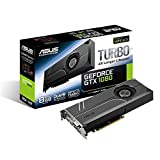
USD 999.77
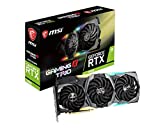
USD 999.99
The links above are affiliate links. As an Amazon Associate, Wccftech.com may earn from qualifying purchases.

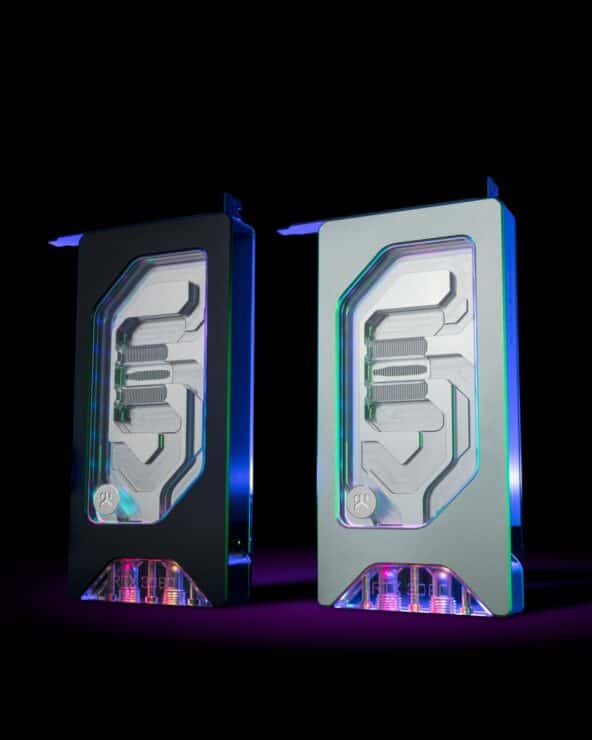


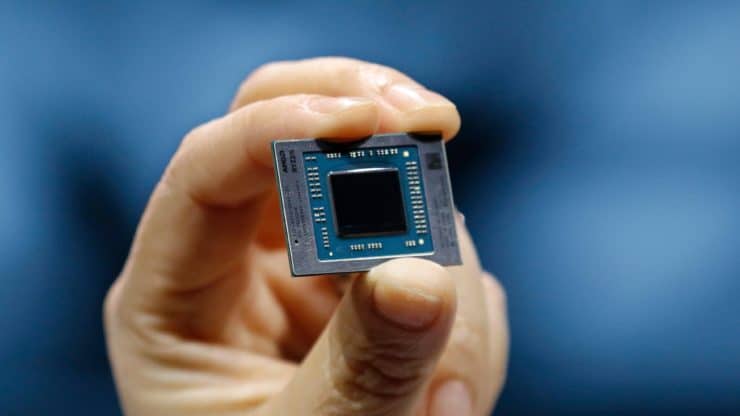
More Stories
EKWB Unveils The Quantum Vector FE RTX 3080 D-RGB – Special Edition Blocks For GeForce RTX 3080 FE Graphics Card
AMD Ryzen 7 5800H 8 Core & 16 Thread Cezanne ‘Zen 3’ High-Performance CPU Shows Up, Early ES Chip With 3.2 GHz Clocks
AMD Ryzen 9 5950X 16 Core Flagship CPU Benchmarked Again, Crushes Intel’s Top Core i9-10980XE 18 Core HEDT Chip